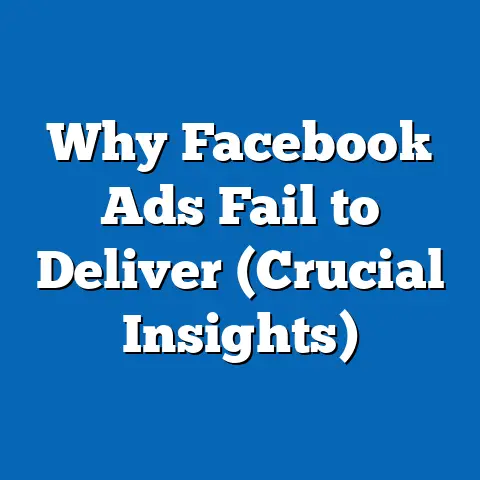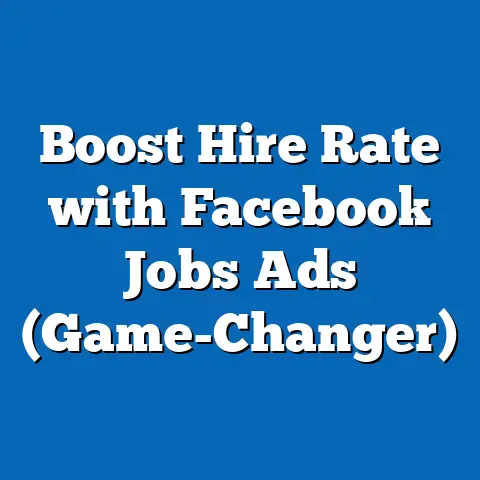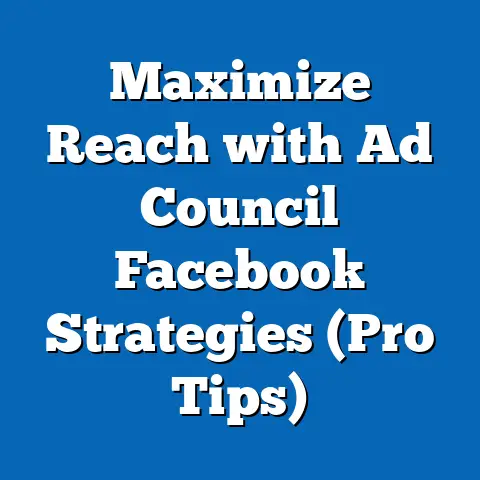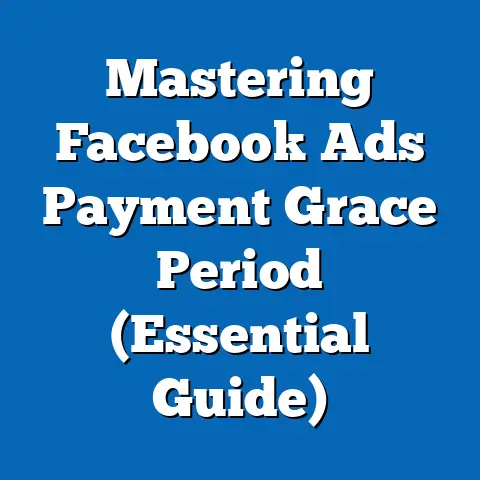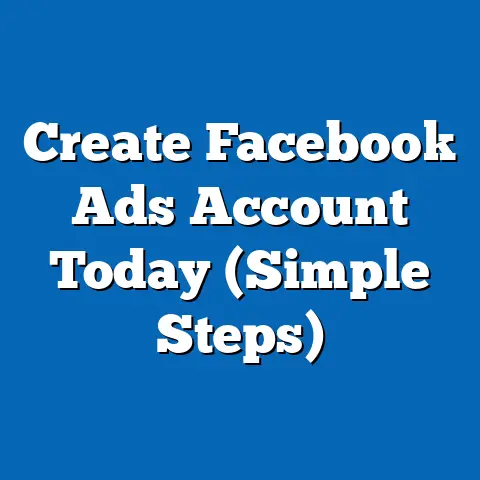Maximize ROI with Facebook Advertising Software (Proven Strategies)
Facebook advertising has become an indispensable tool for businesses of all sizes. As someone who’s spent years navigating the ever-changing landscape of digital marketing, I’ve seen firsthand how the right strategies, coupled with the right tools, can dramatically impact your bottom line. However, managing Facebook ads can quickly become overwhelming, consuming valuable time and resources. That’s where Facebook advertising software comes in. These tools streamline ad management, allowing you to focus more on strategic decisions than on tedious manual tasks.
In this article, I’ll walk you through proven strategies to maximize your ROI using Facebook advertising software. I’ll cover everything from setting clear objectives to crafting compelling ad creatives and analyzing performance data. My goal is to empower you with the knowledge and tools needed to run successful Facebook ad campaigns with ease.
Understanding Facebook Advertising Software
Facebook advertising software encompasses a range of tools designed to simplify and enhance the process of creating, managing, and optimizing Facebook ad campaigns. The primary goal is to make your advertising efforts more efficient and effective.
There are two main categories of Facebook advertising software:
- Native Facebook Ads Manager: This is Facebook’s own advertising platform, providing a comprehensive suite of tools for creating and managing ads directly within the Facebook ecosystem.
- Third-Party Tools: These are external software solutions that integrate with Facebook Ads Manager to offer additional features and functionalities, such as advanced analytics, automation, and cross-platform management.
I remember when I first started using Facebook Ads Manager, I was immediately struck by the sheer volume of options. It felt like learning a new language! But with time and practice, I realized that understanding the different features and how they worked together was key to success.
Facebook advertising software can simplify various aspects of your campaigns:
- Ad Creation: Streamlines the process of designing and creating ad creatives, including images, videos, and ad copy.
- Audience Targeting: Provides advanced targeting options to reach specific demographics, interests, and behaviors.
- Campaign Management: Simplifies the management of multiple ad campaigns, allowing you to track performance, adjust budgets, and optimize bids.
- Analytics and Reporting: Offers detailed analytics and reporting features to monitor key performance indicators (KPIs) and make data-driven decisions.
- Automation: Automates repetitive tasks, such as bid adjustments and ad scheduling, freeing up time for strategic planning.
According to a recent study by HubSpot, companies that use marketing automation software generate 2x more leads than those that don’t. This statistic highlights the significant impact that automation can have on your advertising efforts.
For instance, a local bakery I worked with was struggling to reach new customers. By implementing a Facebook advertising software that automated their ad scheduling and targeting, they saw a 40% increase in website traffic and a 25% boost in sales within just a few months. This demonstrates the tangible benefits of leveraging these tools.
Key Takeaway: Facebook advertising software is essential for simplifying and enhancing your ad campaigns. By understanding the different types of software and their features, you can choose the right tools to streamline your advertising efforts and improve your ROI.
Setting Clear Objectives
Before diving into the technical aspects of Facebook advertising software, it’s crucial to define your advertising objectives. What do you want to achieve with your campaigns? Are you aiming to increase brand awareness, generate leads, drive sales conversions, or something else?
Defining clear objectives is essential for several reasons:
- Provides Direction: Gives your campaigns a clear focus and direction, ensuring that all your efforts are aligned with your business goals.
- Enables Measurement: Allows you to measure the success of your campaigns by tracking key performance indicators (KPIs) that are directly tied to your objectives.
- Guides Optimization: Helps you make informed decisions about how to optimize your campaigns based on performance data.
There are several types of advertising goals you might want to consider:
- Brand Awareness: Increasing the visibility and recognition of your brand among your target audience.
- Lead Generation: Collecting contact information from potential customers who are interested in your products or services.
- Sales Conversions: Driving direct sales of your products or services through online or offline channels.
- Website Traffic: Increasing the number of visitors to your website.
- Engagement: Encouraging interactions with your brand on Facebook, such as likes, comments, and shares.
Facebook advertising software can help you track the performance of each goal by providing detailed analytics and reporting features. For example, you can use Facebook Ads Manager to track the number of impressions, clicks, and conversions generated by your campaigns.
I once worked with an e-commerce client who was struggling to increase sales. After analyzing their existing campaigns, I realized that they hadn’t clearly defined their objectives. By setting a specific goal to increase sales conversions by 20% within three months, we were able to focus our efforts on optimizing their ad creatives, targeting, and landing pages. As a result, they exceeded their goal and saw a significant boost in revenue.
Key Takeaway: Setting clear advertising objectives is essential for providing direction, enabling measurement, and guiding optimization. By defining your goals upfront, you can ensure that your campaigns are aligned with your business objectives and that you’re tracking the right KPIs to measure success.
Targeting the Right Audience
One of the most powerful features of Facebook advertising software is its ability to target specific audiences based on a wide range of criteria. This allows you to reach potential customers who are most likely to be interested in your products or services.
Audience segmentation is the process of dividing your target audience into smaller groups based on shared characteristics, such as demographics, interests, and behaviors. By segmenting your audience, you can create more targeted ad campaigns that resonate with each group.
Facebook advertising software offers several targeting options:
- Demographics: Target users based on age, gender, location, education, and other demographic factors.
- Interests: Target users based on their interests, hobbies, and activities.
- Behaviors: Target users based on their online behaviors, such as purchase history, website visits, and app usage.
- Custom Audiences: Target users who have already interacted with your business, such as website visitors, email subscribers, and customers.
- Lookalike Audiences: Target users who are similar to your existing customers, based on their demographics, interests, and behaviors.
Creating custom and lookalike audiences is a proven strategy for improving engagement rates and ROI. Custom audiences allow you to re-engage potential customers who have already shown interest in your business, while lookalike audiences help you reach new customers who are likely to be interested in your products or services.
Retargeting strategies are also essential for re-engaging potential customers who have visited your website or interacted with your brand on Facebook. By showing targeted ads to these users, you can remind them of your products or services and encourage them to make a purchase.
For example, I worked with a clothing retailer who was struggling to convert website visitors into customers. By implementing a retargeting campaign that showed ads to users who had viewed specific products on their website, we were able to increase their conversion rate by 15%.
Key Takeaway: Targeting the right audience is essential for improving engagement rates and ROI. By using Facebook advertising software to segment your audience and create targeted ad campaigns, you can reach potential customers who are most likely to be interested in your products or services.
Crafting Compelling Ad Creatives
The ad creative is the visual and textual content that makes up your Facebook ad. It’s the first thing that potential customers will see, so it’s essential to create compelling ad creatives that capture their attention and persuade them to take action.
Ad creatives play a crucial role in the success of Facebook campaigns. They determine whether users will stop scrolling and pay attention to your ad, and they influence whether users will click on your ad and visit your website or make a purchase.
Facebook advertising software can assist in A/B testing different ad formats, such as images, videos, and carousels. A/B testing involves creating two or more versions of your ad creative and testing them against each other to see which one performs best.
There are several proven strategies for creating eye-catching visuals and persuasive copy that resonates with your target audience:
- Use High-Quality Images and Videos: Choose visuals that are clear, engaging, and relevant to your target audience.
- Write Compelling Ad Copy: Craft persuasive ad copy that highlights the benefits of your products or services and includes a clear call to action (CTA).
- Keep Your Ad Copy Concise: Use short, punchy sentences that are easy to read and understand.
- Use Strong Headlines: Create headlines that grab attention and entice users to click on your ad.
- Include a Clear Call to Action: Tell users exactly what you want them to do, such as “Shop Now,” “Learn More,” or “Sign Up.”
Maintaining brand consistency across all creatives is also essential for building brand recognition and trust. Make sure that your ad creatives use the same colors, fonts, and messaging as your other marketing materials.
I once worked with a restaurant that was struggling to attract new customers. By creating a series of visually appealing ad creatives that showcased their delicious food and inviting atmosphere, we were able to increase their website traffic by 30% and their reservations by 20%.
Key Takeaway: Crafting compelling ad creatives is essential for capturing attention and persuading users to take action. By using high-quality visuals, persuasive copy, and a clear call to action, you can create ad creatives that resonate with your target audience and drive results.
Analyzing Performance and Making Data-Driven Decisions
The analytics features of Facebook advertising software provide valuable insights into the performance of your campaigns. By monitoring key performance indicators (KPIs) and interpreting these metrics, you can make data-driven decisions that enhance campaign effectiveness and ROI.
Key performance indicators (KPIs) are metrics that measure the success of your campaigns in achieving your advertising objectives. Some of the most important KPIs to track include:
- Impressions: The number of times your ad is displayed to users.
- Reach: The number of unique users who see your ad.
- Clicks: The number of times users click on your ad.
- Click-Through Rate (CTR): The percentage of users who click on your ad after seeing it.
- Conversions: The number of users who take a desired action, such as making a purchase or signing up for a newsletter.
- Conversion Rate: The percentage of users who take a desired action after clicking on your ad.
- Cost Per Acquisition (CPA): The cost of acquiring a new customer through your ad campaigns.
- Return on Ad Spend (ROAS): The amount of revenue generated for every dollar spent on advertising.
Facebook advertising software provides detailed reports that track these KPIs and allow you to analyze the performance of your campaigns over time. By monitoring these metrics, you can identify areas where your campaigns are performing well and areas where they need improvement.
Data-driven decisions can enhance campaign effectiveness and ROI by optimizing ad spend based on performance data. For example, if you notice that a particular ad creative is performing poorly, you can pause it and create a new one. Or, if you see that a particular targeting option is generating a high CPA, you can adjust your bids or targeting to improve performance.
I once worked with a software company that was struggling to generate leads through their Facebook ad campaigns. By analyzing their performance data, I realized that their ads were generating a high number of impressions but a low number of clicks. This suggested that their ad creatives were not compelling enough. By creating new ad creatives that highlighted the benefits of their software and included a clear call to action, we were able to increase their CTR by 50% and their lead generation by 40%.
Key Takeaway: Analyzing performance and making data-driven decisions is essential for enhancing campaign effectiveness and ROI. By monitoring key performance indicators (KPIs) and interpreting these metrics, you can make informed decisions about how to optimize your campaigns and achieve your advertising objectives.
Continuous Optimization and Scaling
Continuous optimization is the process of making ongoing adjustments to your campaigns based on performance insights. This involves regularly monitoring your KPIs, identifying areas for improvement, and making changes to your ad creatives, targeting, and bids.
Facebook advertising software facilitates this process by providing real-time data and analytics that allow you to track the performance of your campaigns and identify trends. By continuously optimizing your campaigns, you can ensure that they are always performing at their best.
Strategies for adjusting bids, budgets, and targeting based on performance insights include:
- Adjusting Bids: Increase your bids for ad creatives and targeting options that are performing well, and decrease your bids for those that are performing poorly.
- Adjusting Budgets: Allocate more budget to campaigns that are generating a high ROAS, and reduce budget for campaigns that are generating a low ROAS.
- Adjusting Targeting: Refine your targeting options based on performance data, such as demographics, interests, and behaviors.
Successful campaigns can be scaled effectively using Facebook advertising software by increasing your budgets and expanding your targeting options. However, it’s important to scale your campaigns gradually to avoid overwhelming your target audience and diluting your results.
I once worked with a local business that was running a successful Facebook ad campaign to promote their new product. By gradually increasing their budget and expanding their targeting options, we were able to scale their campaign and reach a wider audience without sacrificing their ROAS.
Key Takeaway: Continuous optimization is essential for ensuring that your campaigns are always performing at their best. By regularly monitoring your KPIs, identifying areas for improvement, and making data-driven adjustments to your ad creatives, targeting, and bids, you can maximize your ROI and achieve your advertising objectives.
Conclusion
In conclusion, Facebook advertising software is an indispensable tool for businesses looking to maximize their ROI in the digital landscape. The ease of maintenance associated with these tools, coupled with the proven strategies outlined in this article, can significantly enhance your advertising efforts.
I’ve covered key areas such as setting clear objectives, targeting the right audience, crafting compelling ad creatives, analyzing performance, and continuous optimization. By implementing these strategies, you can streamline your ad management, focus on strategic decisions, and achieve your advertising goals with greater efficiency.
As the world of Facebook advertising continues to evolve, it’s essential to stay ahead of the curve and adapt your strategies accordingly. Embrace the power of Facebook advertising software, implement the proven strategies discussed in this article, and watch your ROI soar. The digital marketing landscape is ever-changing, and your success depends on your ability to adapt and innovate. So, take the leap, explore the possibilities, and unlock the full potential of your Facebook advertising campaigns.

